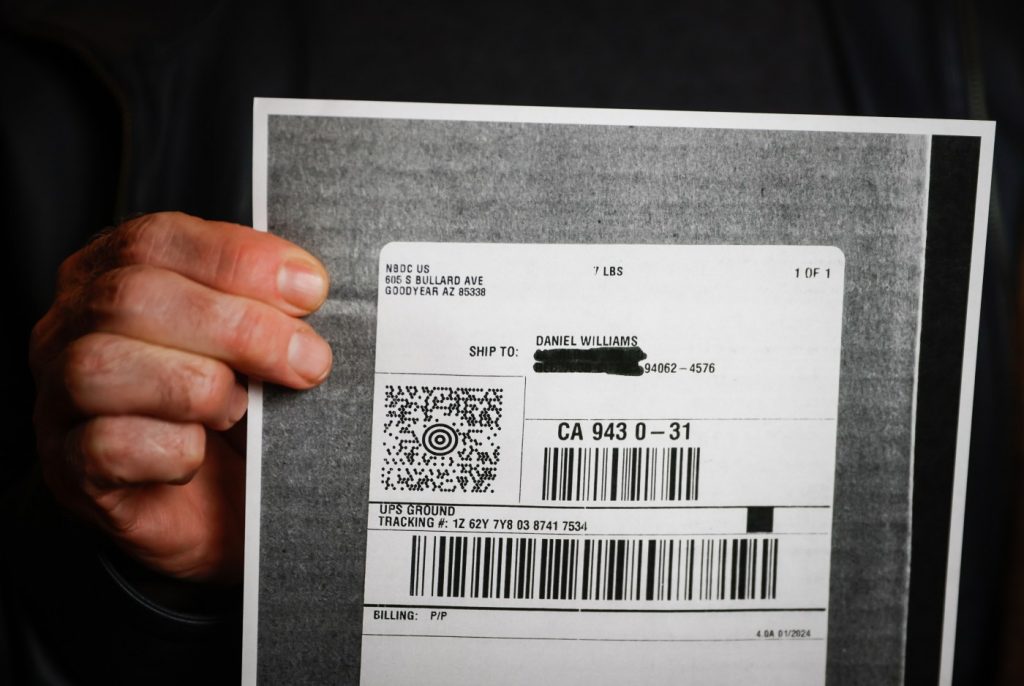Getting packages you never ordered? See a fraudulent credit card charge on your bill for something you didn’t buy?
Related Articles
Who’s behind these mysterious deliveries? Woodside man showered with products he didn’t order
The tech sector is pouring billions of dollars into AI. But it keeps laying off humans
Amazon Audible layoff follows job cuts to company’s Prime Video, MGM and Twitch divisions
Here are the ‘Worst in Show’ CES products, according to consumer and privacy advocates
Opinion: Amazon says it’s ‘Earth’s best employer.’ Locals not so sure
Technology has made scamming more sophisticated, and dealing with customer service operations to deal with fraud can be frustrating. We checked in with two experts for their advice if you become a victim.
RELATED: Who’s behind these mysterious deliveries? Woodside man showered with products he didn’t order
Here are tips on how to protect yourself from e-commerce and other online scams from Lou Covey, editor of Cyber Protection Magazine:
Make sure you know who the vendor is. Do a little bit of research, rather than selecting just on price. “If you’ve never heard of them, that should be your first concern. When we walk through downtown San Francisco, we’re constantly aware of people around you. We don’t do that online.”
“Amazon Prime” vendors are better vetted than others. The easiest way to find Prime vendors is to check the little box in the upper left hand corner of your screen that says “Prime only.” Amazon automatically clicks it off, so you have to click it on.
Consider using “passkeys,” which are easier and more secure than passwords. They let you sign in to your Amazon account by using your face, fingerprint, or the PIN that you use to unlock your device.
If you use passwords, change them every three months. Don’t repeat passwords or use the same password for every account. A “password manager” makes it easier to change them frequently, using a randomly generated code.
Set up your bank account so it issues an alert every time your credit card or your bank card is used, so you’ll know as soon as a transaction happens.
Credit unions provide better security than banks. To be sure, banks are more numerous and convenient. But larger banks offer larger targets for hacking.
Install anti-virus software on your computer. Because the software is constantly running, it may slow down your machine. But it will fend off hackers who are trying to steal personal information.
Amas Tenumah, author of the book “Waiting for Service: An Insider’s Account of Why Customer Service is Broken,” offers this advice if you receive a package you didn’t order, or notice fraudulent charge on your credit card bill.
First, check with friends and family to confirm it’s not a gift. If no one you know ordered the package, report it online by going to Amazon’s Report Unwanted Package form.
Don’t buy anything without first vetting a company’s customer service. Customer service is bad by design; it doesn’t generate revenue for a company. Because the most expensive service is delivered by a human, companies try to automate as much as possible. So first you’ll meet a ChatBot, not a person. If you go to a LiveChat, you’ll get a human, but they’re managing a half-dozen other conversations at the same time. A one-on-one phone conversation with a real person is the least efficient for the company, but it’s the best way for you to solve your complicated problem.
Customer service staffers are required to read from scripts and must follow policies and procedures. They may be disciplined if they can’t solve problems. So don’t wait for them to voluntarily send your problem up the chain of command — instead, you have to make a direct request. “Keep them on your side,” said Tenumah. “Say, ‘Hey, I know this isn’t your fault, but can you get me to a manager?’ They need permission to escalate.”
Beware of sharing personal information, such as your full Social Security number, with customer service.
If a manager can’t help, say you will continue to escalate until there is a solution. “No one wants an email from their boss,” said Tenumah. If you send an email to an executive, that can help — not because they’ll respond, but they’ll find someone who can. Secondly, try social media, because companies monitor those platforms. State what the problem is,
Data shows that customer service centers get lower call volumes in the early morning or late evening. Call times are the lowest, on average, at 7 a.m. Wait times are 70% shorter if you call before noon. Additionally, data shows that Wednesdays and Thursdays have the lowest average wait times; Mondays have the longest wait times.


